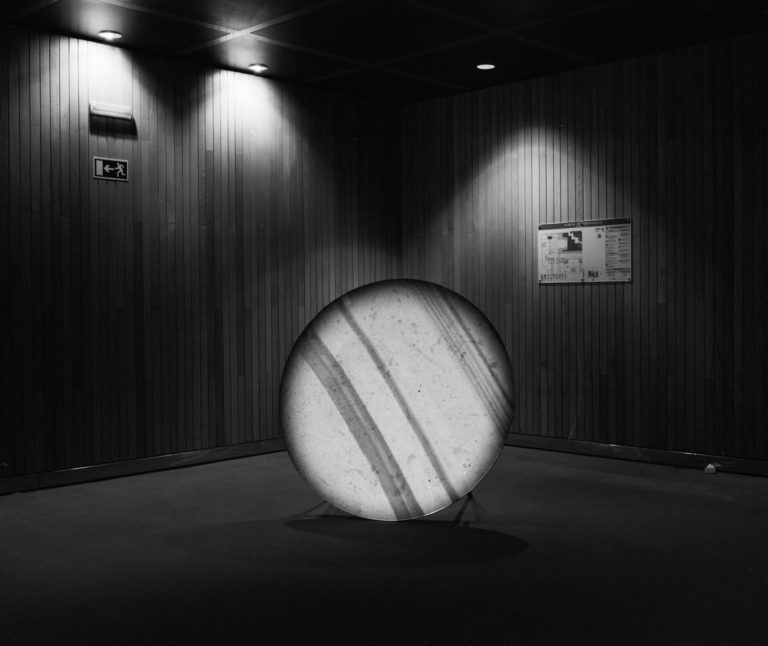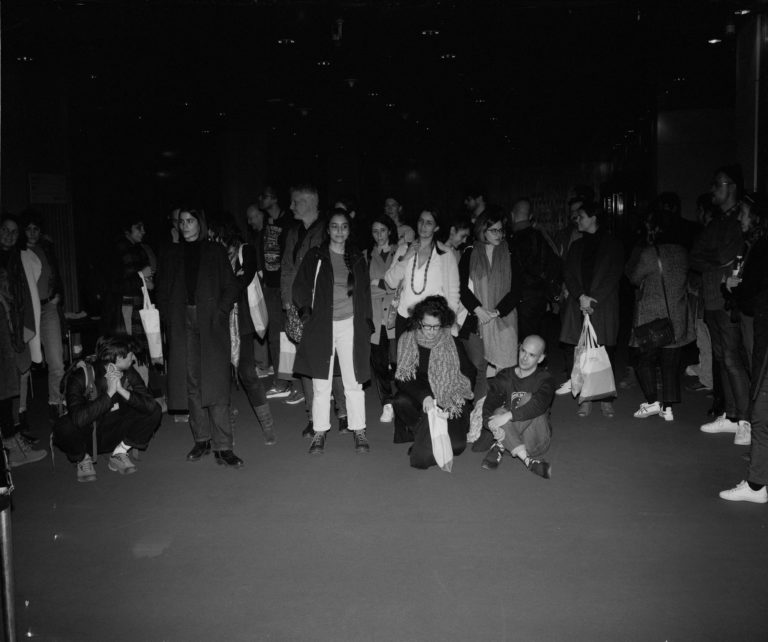Esteve patente na Culturgest, durante toda a semana do Anthropocene Campus Lisboa: Parallax, a exposição “Guarda-Rios”, do colectivo West Coast.
O colectivo West Coast iniciou residências em diferentes rios do país, integradas no seu projecto Guarda-Rios. Tomando vários territórios ribeirinhos, este projeto visa investigar como as relações do ser humano com seu ambiente (natural ou antropogénico) se refletem na paisagem. As primeiras residências tiveram lugar nas regiões do Tejo e Douro Internacional, ao longo da fronteira entre Portugal e Espanha, que é parcialmente definida por esses dois rios ou seus afluentes. Nas margens destes rios e ribeiras, a Costa Oeste encontrou vestígios da história recente da ocupação humana dos respectivos territórios, tais como as diferentes actividades e tecnologias que aproveitaram os recursos hídricos – desde a pesca e os cursos de água, até às barragens que os domaram e converteram esses rios, outrora livres, em reservatórios, alterando profundamente a paisagem. Observou também que um sentimento de abandono se prolonga ao longo destas paisagens, derivado não só de um desinvestimento do poder central, mas também do desaparecimento ou desvalorização das actividades ligadas à terra e aos rios, que dão à expressão “terra de ninguém” um significado quase literal.
Das histórias ligadas aos rios, a Costa Oeste destaca as que ouvem da boca dos pescadores que falam das técnicas e artes de pesca específicas para as diferentes espécies de peixes, mas também do desaparecimento gradual das espécies indígenas, com a construção de barragens ou a introdução de espécies exóticas. Outras mudanças nas actividades agrícolas e pastoris resultaram do abandono progressivo da agricultura de subsistência ou da pequena agricultura, por vezes substituída por explorações maiores ou mais intensivas, e da redução dos rebanhos de ovelhas ou cabras e do número de pastores. Estas alterações foram evidenciadas não só pela leitura da paisagem mas também pelo estado de abandono de vários edifícios, como muros, abrigos e estruturas específicas: as charcas e os buracos, no Tejo, e as pisões e lofts, no Douro. A seca extrema, sentida em todo o território, permitiu ao colectivo caminhar sobre vários leitos secos, paisagens lunares que revelaram arquitecturas ancestrais e objectos residuais de uma realidade de proximidade com o rio.
West Coast’s “Guarda Rios” exhibition was on display at Culturgest throughout the week of the Anthropocene Campus Lisbon: Parallax.
The collective started residences on different rivers in the country, integrated into its Guarda-Rios project. Taking several riverside territories, this project aims to investigate how the relations of human beings with their environment (natural or anthropoized) are reflected in the landscape. The first residences took place in the Tagus and Douro International regions along the border between Portugal and Spain, which is partially defined by those two rivers or their tributaries. On the banks of these rivers and streams, West Coast found traces of the recent history of human occupation of their respective territories, such as the different activities and technologies that took advantage of water resources – from fishing and waterways, to the dams that tamed their and converted those rivers, once free, into reservoirs, profoundly changing the landscape. It also observed that a sense of abandonment lingers along these landscapes, derived not only from a disinvestment of central power but also from the disappearance or devaluation of activities linked to land and rivers, which give the expression ‘no man’s land’ an almost literal meaning.
From the stories linked to the rivers, West Coast highlights the ones they hear from the mouths of fishermen who speak about the techniques and fishing gear specific to the different species of fish but also of the gradual disappearance of indigenous species, with the construction of dams or the introduction of exotic species. Other changes in agricultural and pastoral activities have resulted from the progressive abandonment of subsistence or small farming, sometimes replaced by larger or more intensive farms, and the reduction of flocks of sheep or goats and the number of shepherds. These changes were made evident not only by reading the landscape but also by the state of abandonment of several buildings such as walls, shelters and specific structures: the waterlets and the holes, in the Tagus, and the pisões and lofts, in the Douro. The extreme drought, felt throughout the territory, allowed the collective to walk on various dry beds, lunar landscapes that revealed ancestral architectures and residual objects of a reality of proximity to the river.





